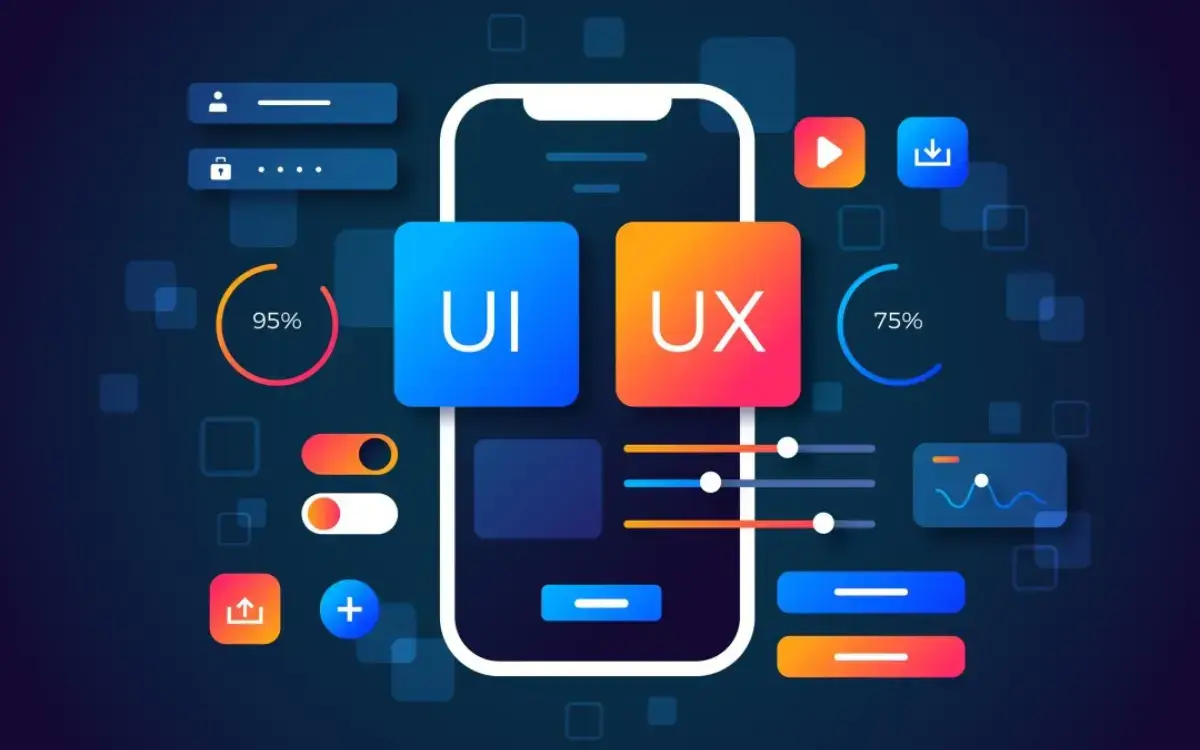How does the intersection of AI and UI design shape our digital experiences? This is a question that many designers and developers are asking. 🤔
AI is becoming an integral part of UI design, influencing how interfaces are built and interacted with.
It involves more than just improving the intelligence or efficiency of interfaces; it also means making the user experience easier to use and personalized.
AI is gradually but drastically changing the way we engage with digital systems, from voice recognition to predictive text.
So, let’s explore this fascinating topic and understand the impact of AI on UI design.
How Has AI Transformed The Field of UI Design?
Artificial Intelligence has significantly transformed the field of User Interface (UI) Design in several ways:
✅ Streamlining the Design Process: AI tools are being utilized to make the design process more streamlined. They can pinpoint problematic UI elements and tackle design issues.
✅ Creating Personalized Interfaces: AI and machine learning algorithms can analyze user behavior, preferences, and feedback in real time. This data is then used by designers to craft interfaces that are more personalized and intuitive.
✅ Improving User Experience: AI is enhancing the overall user experience by making interfaces more adaptive and user-centric. This includes the incorporation of AI chatbots and predictive user experiences.
✅ Enabling Innovative Digital Products: AI is facilitating the creation of innovative digital products in the competitive software market.
✅ Transforming Traditional UIs: Generative AI is bringing about rapid changes in user interfaces. This includes the development of seamless interactions, quick development processes, and unrestricted creativity.
✅ Introducing AI-Driven Tools: The combination of AI and no-code development is proving to be a game-changer in the tech industry. This has led to the development of intelligent interfaces that adapt to user preferences.
How AI-driven Tools Enhance The UI Design Process?
AI-driven tools have significantly enhanced the UI Design process by:
- Automating Repetitive Tasks
- Accelerating Prototyping and Iteration
- Data-driven Design Decisions
- Enhanced Accessibility
- Creative Inspiration and Exploration
- Improved Collaboration and Communication
✅ Discover The Best AI Platform for User Interface ✅
How Does AI Contribute to Personalizing User Interfaces?
AI has major contribution in Personalizing User Interfaces and here some basic ways:
- Understanding AI-Powered Personalization: AI uses machine learning to analyze user data, enabling designers to create custom experiences. It learns from user interactions and optimizes the user journey.
- Tailoring Content and Recommendations: AI uses user data to deliver personalized content and recommendations, increasing engagement and conversions.
- Dynamic User Interfaces: AI-powered interfaces adapt to user behavior and context, providing a seamless experience.
- Predictive Analytics for Anticipatory Design: AI’s predictive capabilities enable interfaces to anticipate user needs and take proactive actions.
- Natural Language Processing (NLP): NLP allows conversational interactions between users and digital interfaces.
- Behavioral Insights and Personalization: AI analyzes user behavior to inform personalization strategies, optimizing layouts and content delivery.
- Segmentation and Micro-Personalization: AI enables precise audience segmentation and micro-personalization, encouraging deeper user engagement.
What Does The Future Hold For AI in UI Design?
The future of AI in UI Design holds immense potential and is expected to bring about significant transformations:
- AI-Native Applications: We’re seeing a shift towards applications that are built with AI at their core. These platforms are designed to understand and respond to human language with ease.
- Generative UI: AI has the potential to create user interfaces from a single prompt, demonstrating its capabilities.
- Simplifying Complex UIs: Future applications might replace complex UI components with simpler chat interfaces and audio cues. Users will be able to express their intent through typing or speaking, and the application will perform the desired action.
- Voice Recognition and LLM: The combination of voice recognition and Language Learning Models (LLM) is expected to change the way users interact with interfaces. By incorporating voice commands and feedback, UX/UI design is becoming more conversational.
- Personalization and Accessibility: AI is anticipated to enhance personalization and accessibility in UI/UX design. It can also contribute to faster and more accurate testing, the use of chatbots, improved visual design, and smarter content creation.
✅ The Best Artificial Intelligence Tools in 2024 ✅
How Can UI Designers Prepare For The Increasing Influence of AI in Their Field?
UI Designers can prepare for the increasing influence of AI in their field in several ways like:
- Upskill: Befriend the data beasts! Learn AI basics – algorithms, user analytics, machine learning. Master tools that harness AI power for prototyping, personalization, and accessibility.
- Collaborate, don’t compete: AI’s your partner, not your replacement. Focus on the human touch – empathy, creativity, storytelling. Build bridges with AI experts, co-create interfaces that are both intelligent and delightful.
- Think beyond pixels: Design for dynamic, adaptive UIs. Craft systems that learn and evolve with user data, anticipate needs, and personalize experiences. Remember, the future interface is a living conversation, not a static screen.
- Champion ethics: Be the AI whisperer! Advocate for responsible AI use, fight bias, and prioritize user privacy. Make sure your AI-powered interfaces are inclusive, fair, and trustworthy.
Final Thoughts
Overall, we’ve taken a comprehensive look at the significant role AI plays in UI Design. We’ve explored how AI has reshaped the field, the benefits of AI-driven tools, and the personalization of user interfaces through AI.
We also peered into the future of AI in UI Design and discussed how designers can prepare for AI’s growing influence. Each point was thoroughly examined to provide a clear understanding of the topic.
As we continue to witness the transformative power of AI, it’s clear that its integration with UI Design is not just a trend, but a significant shift in the design process. This fusion promises exciting possibilities and advancements in the years to come.
